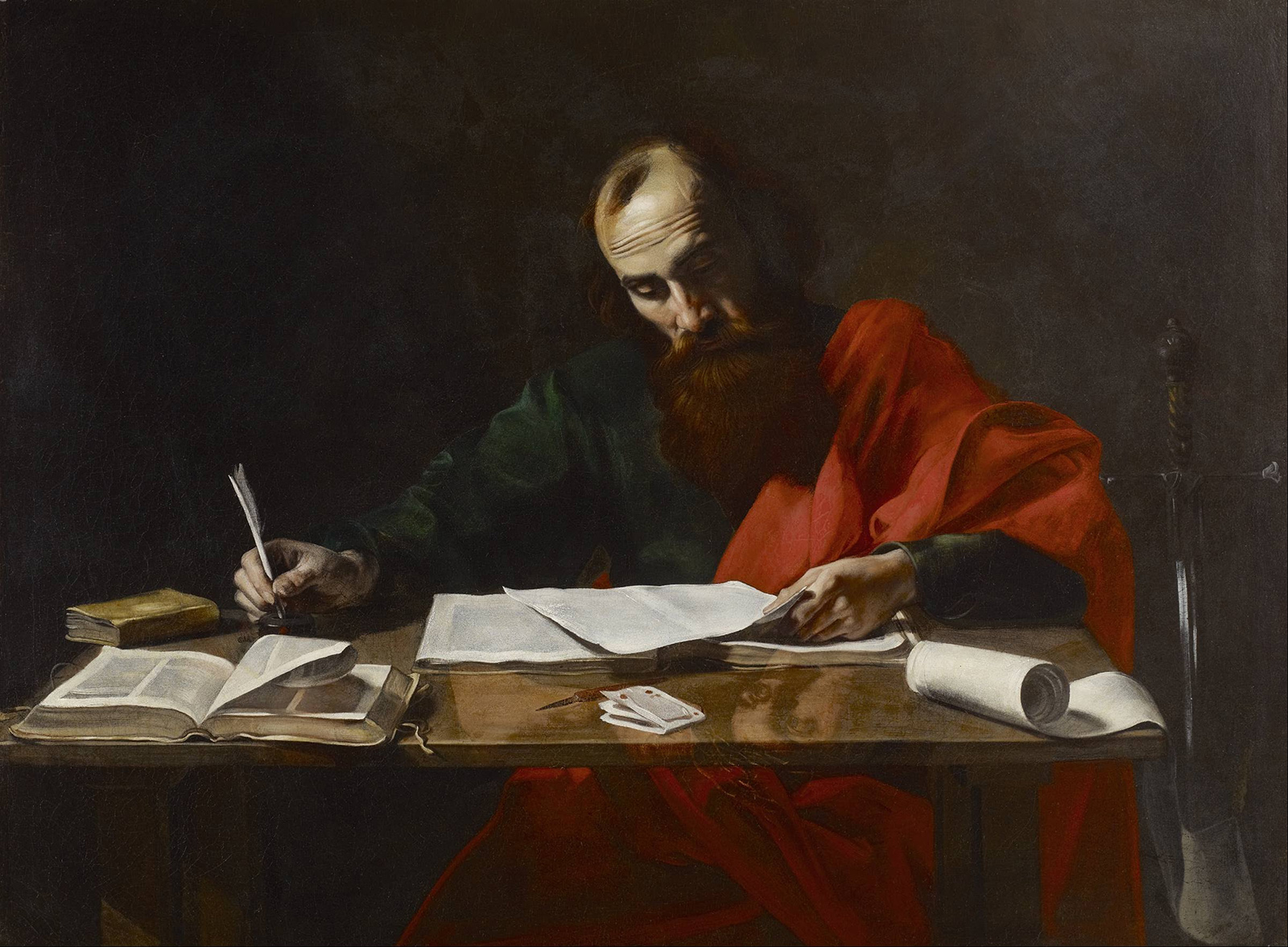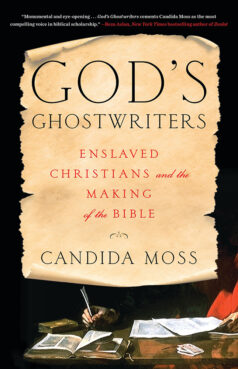(RNS) — Some books are inspired by world-shattering events, like a global pandemic.
Others by something as small as getting old enough to need reading glasses.
New Testament scholar and author Candida Moss’ new book, “God’s Ghostwriters,” was inspired by both. The book, due out March 26, looks at the behind-the-scenes people — scribes, copyists, translators and others — who brought the New Testament to life and who have been forgotten — because they did their jobs too well, writes Moss.
Moss said getting glasses made her look at the Bible in a new light. She began wondering how people in the ancient world, such as the authors of the New Testament, read and wrote if they could no longer see properly. Then COVID-19 hit — and Moss, who is a kidney transplant recipient — was stuck at home in New York and dependent on deliveries from Amazon and other companies for life’s essentials.

Candida Moss. (Photo by Brian McConkey)
“I was able to isolate because other people were being placed in harm’s way on my behalf,” she said. That experience led her to think about the unknown people we all rely on — and again had her thinking about the Bible. It also sent her looking into the history of literary work in ancient Rome, much of which was done by slaves and formerly enslaved people.
Along the way, she came to see that much of the New Testament was likely produced by enslaved people and lower-status workers — something that had not crossed her mind before. She began to think that scholars and readers of the Bible have overlooked something essential by missing the accomplishment of these behind-the-scenes contributors.
“If you start thinking about enslaved people as co-authors of these texts, the Bible reads so differently,” she told Religion News Service in a recent interview
Much of New Testament scholarship and Bible interpretations focuses on finding the author’s original intent and audience. That’s based on an incomplete model that assumes the books of the New Testament had a single author — instead of being collaborative efforts.
“What we are missing is all the people who did all the work,” she said. “And the kind of genius that goes into that kind of literary work.”

“Saint Paul Writing His Epistles,” attributed to Valentin de Boulogne, circa 1620. (Image courtesy of Wikipedia/Creative Commons)
Moss said our understanding of how books of the Bible were written has also been shaped by Renaissance art — which often depicted religious leaders such as the Apostle Paul sitting at a desk, surrounded by books, with quill in hand, writing on parchment.
“Everything about that image is wrong,” Moss said.
The Apostle Paul, she said, makes it clear in his letters that he was dictating the text to someone else — and in at least one case, made a point of writing out a line or two in his hand to show the difference. Most of his letters were written in prison — and Roman prisons were dark places and not conducive for writing.
During the time those letters were written, almost all dictation was taken by people who were enslaved or used to be enslaved, said Moss. Those literary workers were in high demand because so few people knew how to write or wanted to invest the time and energy needed to write by hand.
She points out that the person who likely took dictation for the Book of Romans — Paul’s longest and best-known work — was named “Tertius,” or “Third.”
That’s the kind of name given to a slave, said Moss.
Roman literary workers who took dictation didn’t use quill and parchment. Instead, Moss explains, they often used wax tablets on which they inscribed a kind of shorthand, then transcribed the shorthand into a written letter. They likely acted as editors as well — taking rambling dictation and smoothing it into polished prose — and as the first translators of the New Testament — given that the spoken language of Jesus and his followers was Aramaic, while the New Testament was written in Greek.
At times, Moss argues, scholars dismiss as mindless or mechanical the work of people like Tertius — referring to them as “secretaries” without realizing the skill required for such projects.
“This is mindful work,” she said.
Taking dictation and transcribing books — and then copying and preserving manuscripts — also requires a great deal of skill and is often overlooked. Moss said scholars tend to only think of copyists or other workers involved in preserving and passing on a text such as the New Testament when they make a mistake or introduce a change to the text.
But those same scholars fail to consider how much those copyists and other workers did right — in preserving the texts. And that erasure can create the illusion that the New Testament comes “straight from the Holy Spirit to your hand,” Moss said, downplaying the role human beings played in creating the text.
“A great scribe writes himself into nonexistence,” she said.

“God’s Ghostwriters: Enslaved Christians and the Making of the Bible” by Candida Moss. (Courtesy image)
Instead of being praised for their skill, those who preserved the text get remembered only for their mistakes.
“That negative characterization fails to represent the amount of work and craftsmanship and indeed love that went into protecting manuscripts and transmitting texts,” Moss said. “Every time someone made a change in a manuscript, they didn’t genuinely think that they were improving it. They’re not all meeting around a table to plot and strategizing about ruining ancient literature. They’re doing their very best and we only see them when they mess up.”
In writing the book, Moss drew on the techniques of scholars and historians who study the Atlantic slave trade, reconstructing the stories of enslaved people who have been erased from history. That meant looking at the roles enslaved people played in Roman society during the time the New Testament was written — and then looking for places where the stories of enslaved people may have been overlooked.
For example, Moss retells the well-known story of a paralyzed man from the Gospel of Luke. In that story, several people carry the man on a mat and lower him down through the roof of a house so Jesus can heal him. Readers of that story, said Moss, may assume the people carrying the man were friends. But the text gives few details about the people carrying the paralyzed man. And that kind of job would often have been done by slaves, she said, which would change the meaning of the story.
Recognizing the role scribes and slaves played in creating the books of the New Testament can democratize the way people read the Bible, said Moss — showing that many hands had a role to play — instead of focusing only on key religious leaders.
In the book, Moss also looks at the way early Christianity spread — from the “lectors” who would have read the text out loud in congregations to the role that word of mouth played in passing the Christian message along.
She said critics of early Christians downplayed the faith because women, slaves and other people considered to have low status were counted among the movement’s followers.
Gossip, it turns out, played a role in spreading the good news.
“When you go look at non-Christian sources, they say that Christianity spread through slaves and women and gossip,” Moss said. “That’s a whole different way of thinking about who was spreading the good news. There was this whole host of people beyond the 12 apostles and Paul who were responsible for the rise of Christianity.”





